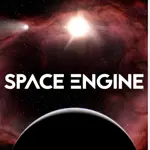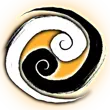Download the latest version of Space Engine APK on Android - We discuss below about the details and features of the game's.
Planetarium is the initial trip for every child who is being taught about the solar system and galaxy including all the space elements. This makes them even adults to visit the stars as well as other planets. The Russian Astronomers developed this Space Engine that is a three dimensional program game which creates your whole world as well as the three dimensional planetarium. In this game you can travel in any direction to any planet in the space. This game is released for platforms like Microsoft Windows and Freeware with beta status on the 13th of June.
Gameplay
This is a virtual based simulation game show casing the realistic elements of the world and space. This game allows its users to explore the whole world as well as the galaxy as they travel from one star to another star and one planet to another planet. With the aliens gathering around different planets you can land there with your spaceship and enjoy the alien planets. Pass through the years in this virtual universe and complete roaming it by passing millennia’s.
The size of this virtual space is around the size of one year and the main theme of this game is the complete scientific approach and knowledge. With the amazing multiple star system and rotating upon their axes you can roam in this Space with your Space Engine that is virtual but a reality that lets you learn the solar system. There are new found planets that you can explore and a large number of species in the universe that you may not find in your local planetarium. Watch the moons and stars scattered around galaxy and enjoy visiting the space using your very own space ship in this open world virtually at your home.
Space Engine — The World Simulator
SpaceEngine Free Download PC Game Repack-Games. com. Every world you experience on your trip will comprise procedural 3D terrain using detailed textures. Whatever you see from the skies — celebrities and galaxies, planets and moons, asteroids and comets, black holes and neutron stars, star clusters and nebulae — are yours to research in the press of a button.
Features of Space Engine APK:
3D space world:
By signing in to the app, you will get a simple interface consisting of 3D space models. By interacting with these innovations, you will be amazed and thrilled. So that is the main reason we recommend the app to all of you.
Representation of several stars and galaxies:
For science students and any common individual, there is a lot more to observe and learn. So if you are from any field, it is your right to think about nature and get into the app.
Virtual characters in space:
You will be able to play games in the space. But, for now, you will get a chance to enjoy life in space. I am thrilled to know about your experience while playing this game.
Good quality of images and content:
Undoubtedly, it has supper exciting and the best quality graphics and content.
SPACEENGINE 0.990 CHANGELOG
MAJOR CHANGES:
- Procedural volumetric raymarched nebulae
- Improved resolution of planetary terrain rendering up to sand grains level
- Physically-based rendering of terrain materials and space ships
- Full VR support: native for Oculus Rift and HTC Vive with controllers, and all Steam-VR compatible HMD
- New post-processing effects
- New animated main menu, combined settings menu
- Built-in tutorials, based on a scenario scripts
- Unified settings menu
- New planet classification system
- Ported to 64 bit
TERRAIN:
- Geometry is independent of textures, faster loading of mountain silhouettes
- Nodes/textures loading priority: closer to camera are loads first
- Changed terrain error metrics to higher level of detail
- Meshless terrain rendering (vertex shader texture fetching)
- Optimized texture transfer to and from GPU
- Optimized VRAM storage of generated/loaded terrain textures - texture arrays
- Support of compressed formats for generated/loaded terrain textures
- All Solar System textures updated to be supported by a new terrain engine
- Large-scale detail textures - "biome sample textures":
- Old texture atlas is replaced by sample textures which are stored in the texture array
- Biome preset system to configure detail textures and palettes, replaces the planet palette system
- Biome preset editor, embedded into the Planet editor
- Big collection of sample textures and planet class presets
- Small-scale detail textures - "soil materials":
- Complex terrain materials, assigned to a surface based on its color and slope
- Soil preset system to configure materials
- Soil preset editor, embedded into the Biome preset editor
- PBR rendering of soil materials
- Displacement mapping of soil materials
- Big collection of material textures and material presets
- New landforms, based on Rodrigo's mod: rivers/canyons, rifts
- Better continent/sea trench shape function
PLANETS:
- Clouds on gas giants and emission textures on stars cannot be switched of
- Updated close-up noise effect of rings
- The "rings winter" effect for Saturn and procedural planets
- Introduced new parameters for the planets scripts: SemiMajorAxisKm, PericenterDistKm, PeriodDays, MassKg
- Opposition effect increases the analytic brightness of a moon or planet, thus affects lighting
- Limited tidal heating of moons
- Thin dust rings around procedural planets like Saturn's E ring
- Uranus-like narrow rings around procedural planets
- Number of eclipse shadows per planet increased to 8
- Separate specular power for water and icy surfaces on planets
- Probability settings for a very massive moons and binary planets are moved to the config file
- Planets with a large moons with a mass ratio less than 20 are classified as a binary planets
- Binary planet and its companion are named "a" and "b"
- Custom models for asteroids and other planetary bodies
- Support for 3-axial ellipsoid planetary bodies, new script parameters: Oblateness (x,y,z) and Dimensions (x,y,z)
- Support for Hapke BRDF for custom planetary body models
- More realistic moon system generation for gas giants
- Added parameter "humidity" to control vegetation spread on planets with life
- Jupiter-like polar cyclones on gas giants, and script/editor parameters to control them
- Equatorial ridge on airless moons and planets
- Equatorial ridge on small moons orbiting inside parent planet's rings
- Generation of hot gas giants on polar and retrograde orbits
- Life of planets is originated based on their surface volatiles, not the class (so carbonia and ferria can produce organic life, frozen aquaria or terra can produce exotic life, etc)
- Aerial organic life on some terrestrial planets (planets which have develop a runaway greenhouse as a result of life changing atmosphere composition)
- Improved density and size distribution of small craters
- Captured outer moons may not be tidally-locked to their planets
- Updated exoplanets catalog up to June 4, 2019
NEW PLANET CLASSIFICATION AND CHEMISTRY:
- Bulk composition classes: terra (rocky planet), carbonia (carbon planet), ferria (iron planet), aquaria (water/ice planet), neptune (ice giant) and jupiter (gas giant)
- Size classes (based on planet mass): micro-, mini-, sub-, (no prefix), super-, mega-
- Surface volatiles classes: airless, arid, lacustrine, marine, oceanic, superoceanic
- Wide diversity of a possible ocean composition on planets: water, ammonia, carbon dioxide, sulfur dioxide, hydrocarbons and others; mixtures are also possible
- Updated planetary chemistry code generates not only the composition of the atmosphere, but also composition of oceans and surface ices
- Composition of ocean is in consistence with the temperature atmospheric pressure
- Supercritical ocean planets (where water vapor is a supercritical fluid) are classified as minineptunes
- Terrestrial planets with atmospheric pressure greater than 1000 atm are classified as minineptunes
- Conditions on the ocean bottom is calculated to determine whether it is rocky or covered by ice VI or ice VII; it is used to determine habitability of the planet
SOLAR SYSTEM:
- Complete list of moons of all gas giants
- New textures for almost all planets and moons
- Analytical model of orbits of Saturn's trojan moons Helene (trojan of Dione), Calypso and Telesto (trojans of Tethys)
- Analytical model of orbits of Saturn's co-orbital moons Janus and Epimetheus, swapping orbits every 4 years
- Analytical fit of the DE-431 model for 8 major planets
- Increased texture resolution of some planets in default installation (Earth, Mars etc)
STARS:
- Integrated Cirax's binary stars catalog updates 1 and 2
- Updated catalog of S stars orbiting Sagittarius A* black hole (ESO)
- More precise stellar data for all potentially habitable exoplanets
- Dense and bright corona for Wolf-Rayet stars (imitation of the powerful stellar wind)
- More realistic distribution of sunspots
- Experimental black hole jets based on comet tail particle system
- Updated data for septuple star system Nu Scorpii
- Procedural open cluster is generated in the center of a procedural diffuse nebula
- Procedural white dwarf/neutron star/black hole is generated in the center of a procedural planetary/supernova remnant nebula
- In the HDR mode star surface automatically become darker on approach to reveal details
RAY-MARCHED NEBULAE:
- Volumetric nebulae rendering using ray-marching technology
- Editor for ray-marched nebula
- Fully customizable shader for ray-marched nebulae: config file describes parameters/uniforms, witch automatically added to the shader, editor and scripts
- Ability to replace model of a certain galaxy or nebula with a custom shader effect using a special script
- Presets for procedural volumetric ray-marched nebulae
SPRITE NEBULAE AND GALAXIES:
- Gamma-corrected rendering of E galaxies
- Hi-quality (bicubic) upsampling for rendering of volumetrics (galaxies, nebulae, comet tails, aurora)
- Galaxy/nebula sprite texture atlases are extended to 4x4 tiles
- More aggressive LOD switching for galaxy and nebula sprite models to save performance in clusters
- Integrated nebulae addons by BambusDude and Phunnie
- Integrated galaxies addon by Kexitt
- Parameters Brightness and Transparency for galaxy and nebula sprite model script
SPACE SHIPS:
- Ships are separated from Planetarium and moved into Flight Simulator game mode
- Introduced mass of a ship modules and thrust of an engine modules, recalculated total mass and thrust of all default ships
- Updated ship editor
- Uncontrollable space ships on a pre-defined orbits
- The "Hold altitude" command while landing starts the starts takeoff sequence
- Experimental PBR + IBL rendering
- Added fake aerodynamics model with just a drag force, to use with UFO cheat
- Added ability to switch off (hide) space ships: a button on the Filters toolbar and a checkbox in the Settings menu, also script commands and console variables
- Script parameter 'Type' for space ships and custom planetary body models to filter them out in the Ships manager (controllable, real static, game static, custom model)
- Packed (smaller) formats of *.sm models, console command OptimizeSM to convert between them
- Support of importing obj saved in 'quads' (no need to convert to 'triangles' anymore)
- Support of DXT5-YCoCg compressed textures and BC4 compressed normal maps for space ships
- Camera binding mode is automatically set to "Follow" if ship HUD mode is changed to "Orbital" or "Warp", and to "SyncRot" if changed to "Horizontal" or "Docking"
- Hold altitude autopilot uses aerodynamics (ailerons and elevator) to keep flight direction horizontal
- Custom sound file for every engine effect, including warp drive
- Sound of nearby ships in the atmosphere
INTERFACE:
- New main menu design with animated background scene
- New settings menu, combining old player, magnitude, filters, graphics, display, sound and controls settings
- New hi-resolution fonts
- Going to the saved location adds it to the journey log
- Updated loading splash window and loading screen
- New splash window textures
- Quotes of famous scientists on loading splash window
- Click on a planet/star disk selects it
- Mouse cursor is captured in screenshots/video in "record with GUI" mode
- Mouse cursor hides itself after 2 seconds of inactive
- Displaying of orbital resonances with neighbouring bodies in the planet Wiki
- Added asteroid and KBO types to info table and Wiki
- Added credits screen and donate button to the main menu
- Colors of orbits, labels and markers could be adjusted in the GUI skin config file
- Added new soundtracks
- Large drop-down boxes (as like module selector in the ship editor) could be scrolled with mouse wheel, and are adaptive to the screen resolution
- Drop-down box behavior changed to the classic one (the box stays opened until left click)
- Labels are drawn with the big font
- Changed format of localization files, to support the new planet classification
- Added "eng-gui.cfg" localization file
- Added a new overlay - displaying the full phase area of the eclipse shadow
- Esc button closes currently opened dialog window first, then opens main menu
- Editor menu with the "palette" of tools
- Names of axes and buttons of VR controllers in the settings menu
- Graphics settings menu have options to set up resolution of warp and reflection textures, resolution of render buffer for fish eye and 360° projections
- Option in user settings to choose between planetary class name sets: terra/aquaria/neptune/jupiter or earth/titan/ice giant/gas giant
- Word "Catalog" is changed to "Real" in interface ("Catalog stars" -> "Real stars" and so on)
- Displaying azimuth and height of a celestial object when observing from planet surface (in info table and wiki)
- Checkboxes/variables to turn on/off accretion disks and jets
- Magnitude/Camera toolbar have buttons to change FOV and editable values (click and type value using keyboard)
- All sliders on the Settings dialog have editable values (click and type value using keyboard)
- Added 'Take screenshot' button to the Camera toolbar
- Localizations: ability to use custom word order in a planet classification string and make it separated by comma or conjunctive
UPDATED UNIVERSE MAP:
- Added ambient lighting to planets
- Automatic adjust of the amount of visible object
- New "Exploration" mode
- The Universe Map have its own music theme
- Option to quickly hide procedural objects
- Smooth zooming of the Map by clicking the Zoom slider
- Elliptical galaxy haze is not rendered on a scale smaller than the galaxy's radius
UPDATED SYSTEM CHART:
- New comparison modes: by diameter, mass, density, temperature
- The system architecture mode: 2D map of a system hierarchy
- Better controls, camera movements are limited
- The System Chart have its own music theme
- Smooth animation on changing comparison mode or filters








